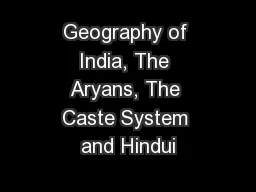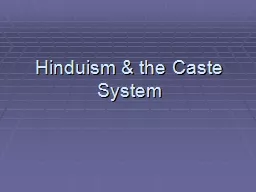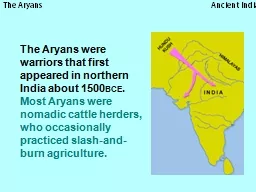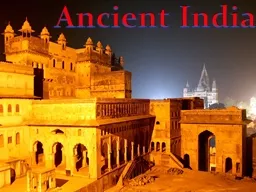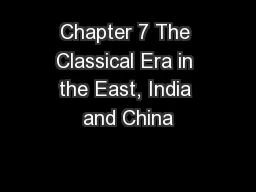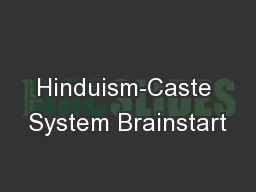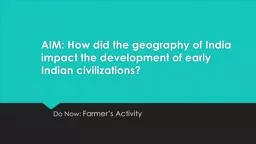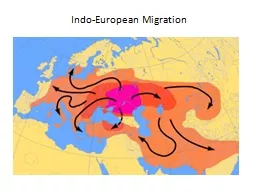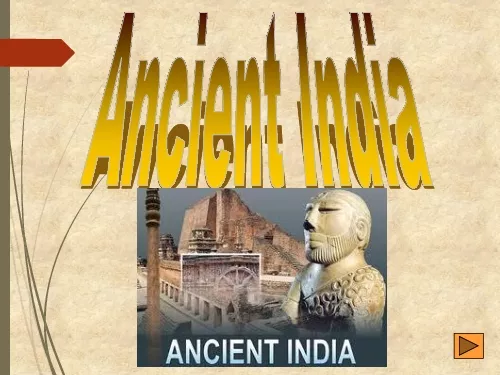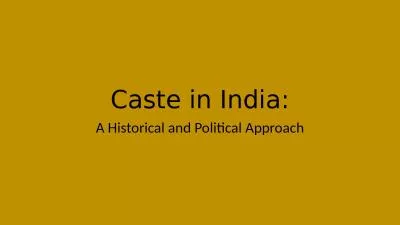PPT-Geography of India, The Aryans, The Caste System and Hindui
Author : test | Published Date : 2017-09-27
Why were physical geography and location important to the development of Indian civilization Be sure you can label Himalayas Hindu Kush Indian Ocean Ganges River
Presentation Embed Code
Download Presentation
Download Presentation The PPT/PDF document "Geography of India, The Aryans, The Cast..." is the property of its rightful owner. Permission is granted to download and print the materials on this website for personal, non-commercial use only, and to display it on your personal computer provided you do not modify the materials and that you retain all copyright notices contained in the materials. By downloading content from our website, you accept the terms of this agreement.
Geography of India, The Aryans, The Caste System and Hindui: Transcript
Download Rules Of Document
"Geography of India, The Aryans, The Caste System and Hindui"The content belongs to its owner. You may download and print it for personal use, without modification, and keep all copyright notices. By downloading, you agree to these terms.
Related Documents

